FormicidaeAnts Camponotus aurocinctus Camponotus consobrinus (Banded Sugar Ant) Camponotus inflatus (Honey Ant) Dolichoderus doriae (Dolly Ant) Leptomyrmex erythrocephalus (Red-headed Spider Ant) Myrmecia brevinoda (Nocturnal Bull Ant) Myrmecia nigrocincta (Jumping Jack Ant) Myrmecia pilosula (Jack Jumper Ant) Myrmecia pyriformis (Inch Ant) Myrmecia rubripes (Bullant) Notoncus spinisquamis Oecophylla smaragdina (Green Tree Ant) Rhytidoponera aspera Rhytidoponera metallica (Green-head Ant)
The common name of Jack Jumper Ant, species Myrmecia pilosula is native to Australia. This species of ant is also known by some other common names including Jack Jumper, Jumping Jack, Jumper Ant and Hopper Ant. Jack Jumper Ant is also the common name of some other species.
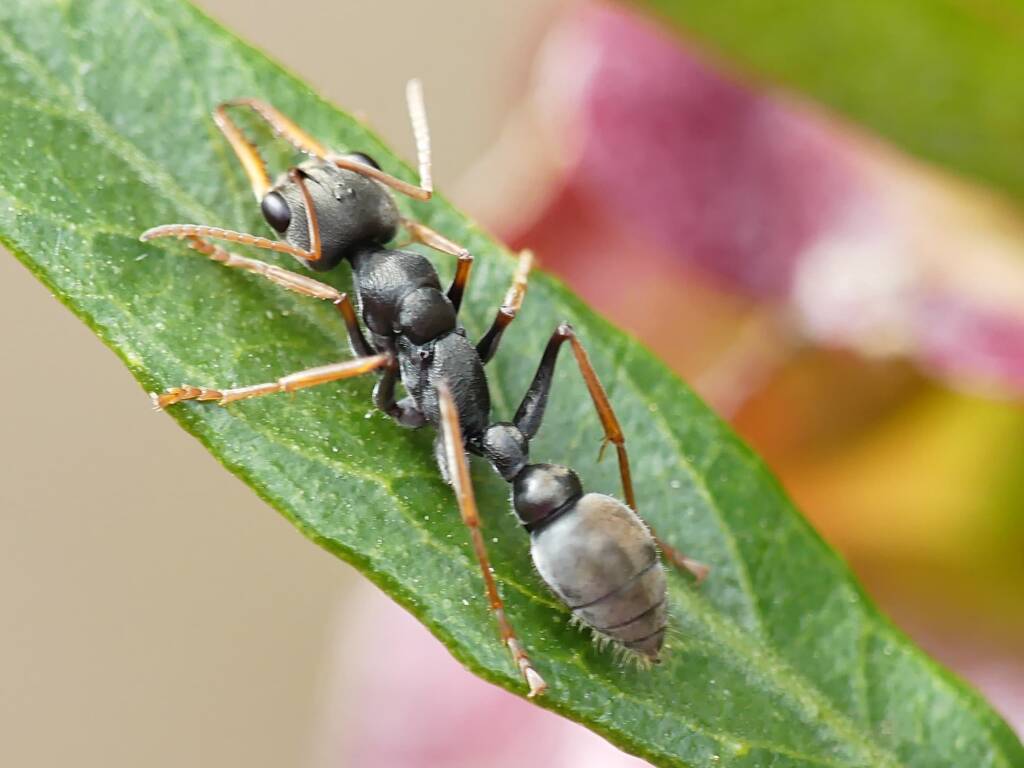
It is a common ant species in Tasmania and south-east of mainland Australia.
Mainly active during the day, the Jack Jumper ants live in open habitats, found nesting in bushland, dry open forests, especially areas that are surrounded by gravel and sandy soil. This species is known for its ability to jump long distances.
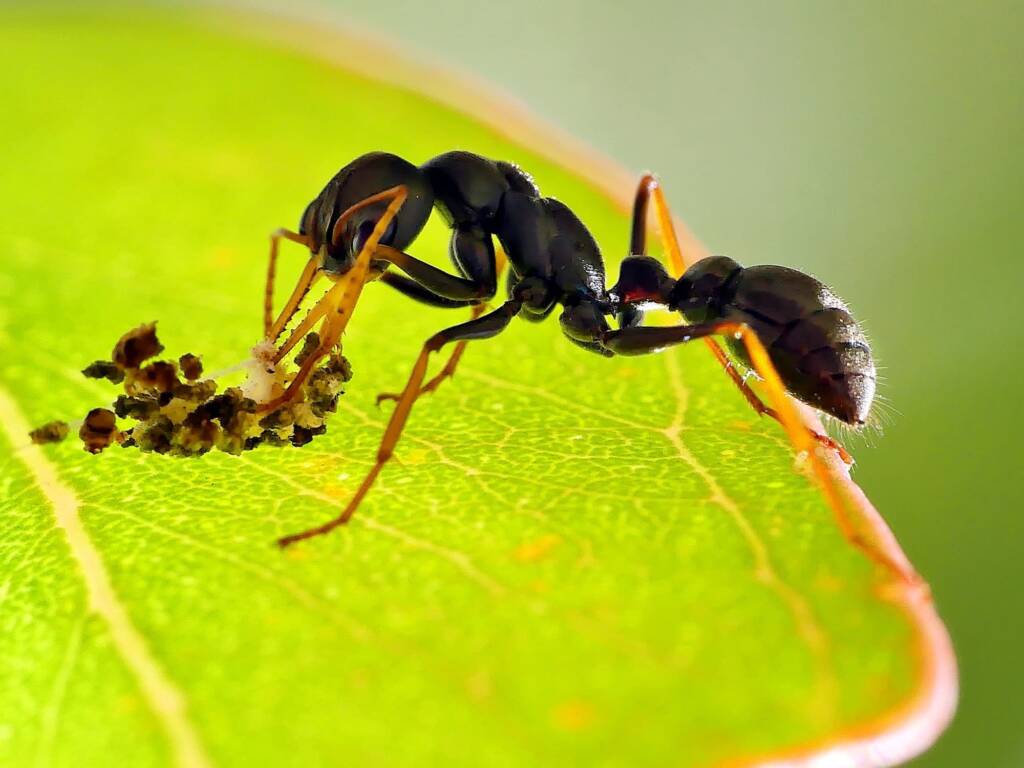
These ants are large; workers and males are about the same size: 12 to 14 mm (0.47 to 0.55 in) for workers, and 11 to 12 mm (0.43 to 0.47 in) for males. The queen measures roughly 14 to 16 mm (0.55 to 0.63 in) long and is similar in appearance to workers, whereas males are identifiable by their perceptibly smaller mandibles.
They prey on small insects and use their barbless stingers to kill other insects by injecting venom. Other ants and predatory invertebrates prey on the jack jumper ant. The average worker has a life expectancy of over one year. Workers are gamergates, allowing them to reproduce with drones, whether or not a queen is present in the colony. The ant is a part of the Myrmecia pilosula species complex; this ant and other members of the complex are known to have a single pair of chromosomes.
Their sting generally only causes a mild local reaction in humans; however, it is one of the few ant species that can be dangerous to humans, along with other ants in the genus Myrmecia. The ant venom is particularly immunogenic for an insect venom; the venom causes about 90% of Australian ant allergies. In endemic areas, up to 3% of the human population has developed an allergy to the venom and about half of these allergic people can suffer from anaphylactic reactions (increased heart rate, falling blood pressure, and other symptoms), which can lead to death on rare occasions.
Source: Jack jumper ant, Wikipedia4
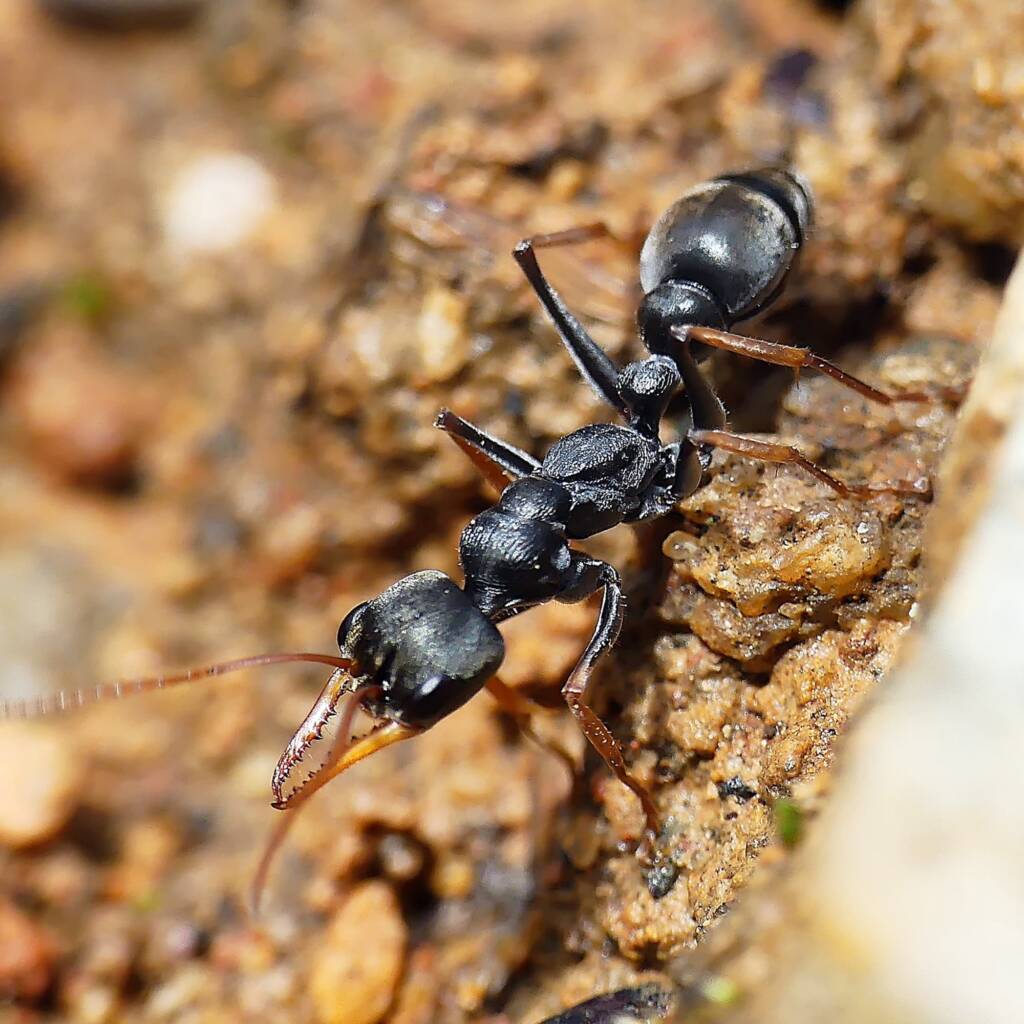
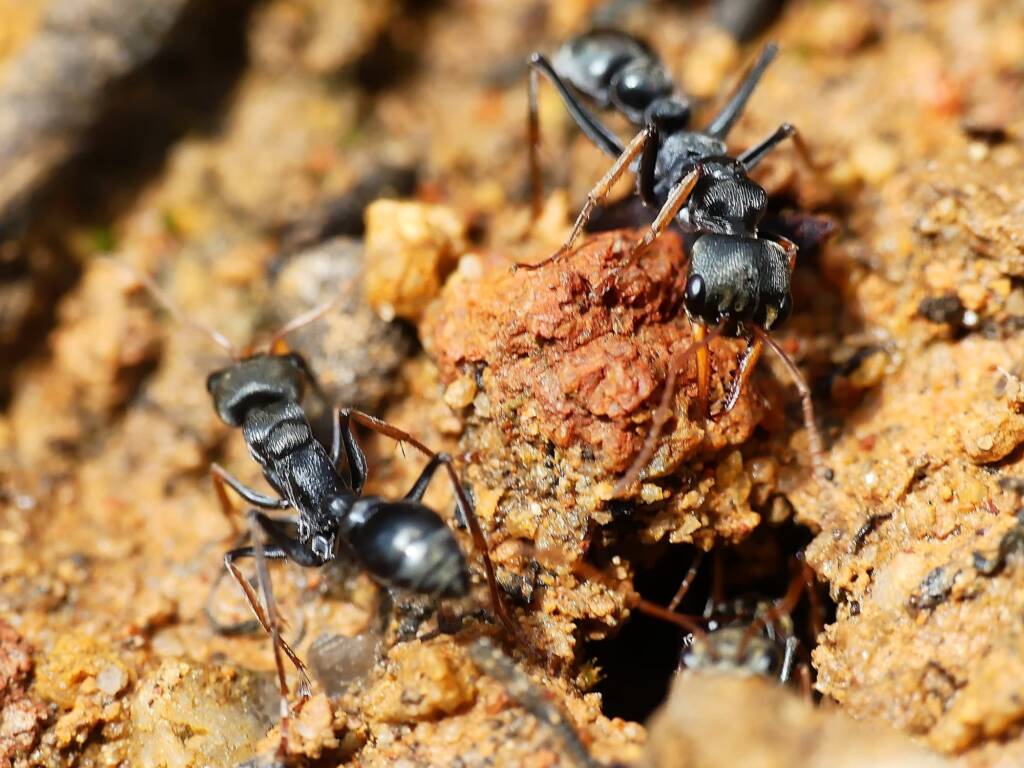
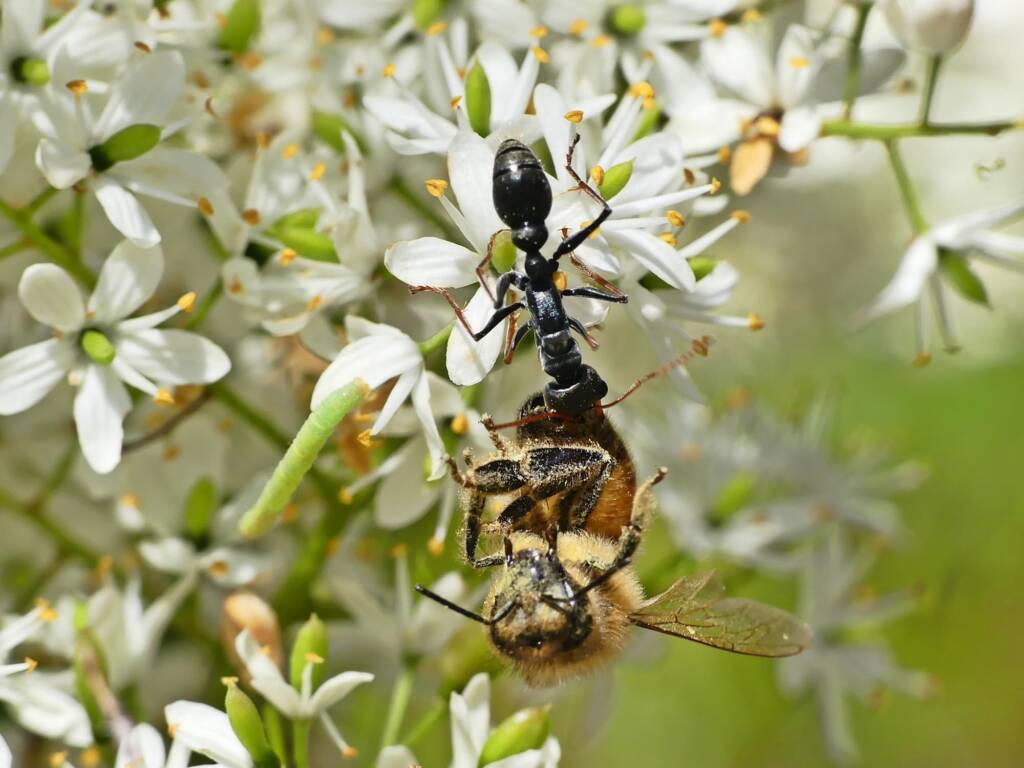
- Scientific classification
- Kingdom: Animalia
- Phylum: Arthropoda
- Subphylum: Hexapoda
- Class: Insecta
- Informal: Pterygotes
- Order: Hymenoptera
- Superfamily: Verspoidea
- Family: Formicidae
- Subfamily: Myrmeciinae
- Genus: Myrmecia
- Species: Myrmecia pilosula
Footnote & References
- Jack Jumper Ant (Myrmecia pilosula), Photographs © Marianne Broug
- Jack Jumper Ant, mariannebroug, iNaturalistAU, https://inaturalist.ala.org.au/observations?place_id=any&subview=map&taxon_id=122515&user_id=mariannebroug&verifiable=any
- Myrmecia pilosula Smith, 1858, Atlas of Living Australia, https://bie.ala.org.au/species/https://biodiversity.org.au/afd/taxa/ee2ca822-29bd-4de1-a9c8-99f6fb23298c
- Jack jumper ant, Wikipedia, https://en.wikipedia.org/wiki/Jack_jumper_ant
FormicidaeAnts Camponotus aurocinctus Camponotus consobrinus (Banded Sugar Ant) Camponotus inflatus (Honey Ant) Dolichoderus doriae (Dolly Ant) Leptomyrmex erythrocephalus (Red-headed Spider Ant) Myrmecia brevinoda (Nocturnal Bull Ant) Myrmecia nigrocincta (Jumping Jack Ant) Myrmecia pilosula (Jack Jumper Ant) Myrmecia pyriformis (Inch Ant) Myrmecia rubripes (Bullant) Notoncus spinisquamis Oecophylla smaragdina (Green Tree Ant) Rhytidoponera aspera Rhytidoponera metallica (Green-head Ant)
InsectsBees Beetles Blattodea Butterflies Coleoptera Cicada Crabronidae Diptera Dragonflies & Damselflies Formicidae Hemiptera Heteroptera (True Bugs) Mango Planthopper Moths Orthoptera Orthopteroid Processionary Caterpillar Stink Bugs, Shield Bugs and Allies Syrphidae Wasps Water Scorpion (Laccotrephes tristis) Witchetty Grub
